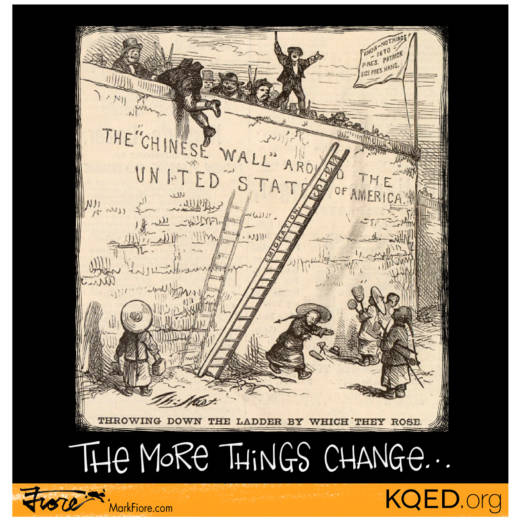After President Trump announced his executive order banning refugees and prohibiting people from seven predominantly Muslim nations from entering the United States, a faint bell went off somewhere deep in my brain. This seems kind of familiar, I thought. I know I’ve heard about this kind of thing before.
With some memory-jogging research, I focused on the Chinese Exclusion Act and the anti-Chinese violence -- such as the 1871 Chinese Massacre -- that took place right here in California.
The Chinese Exclusion Act of 1882 -- the first major law restricting immigration to the United States -- was largely a response to fear on the part of Americans on the West Coast, who attributed declining wages and unemployment to Chinese workers. The act halted Chinese immigration for 10 years and prohibited Chinese from becoming U.S. citizens.
Sure, I could draw a new cartoon about the parallels to Trump's executive order and his border wall, but maybe there was a cartoon drawn back in the 1800s that's still timely today. With a little more digging, I discovered a wonderful cartoon by Thomas Nast, a man often called "the father of the American political cartoon."
The cartoon shows European immigrants, already in the United States, pulling up the ladder to stop Chinese immigration. The same issue of Harper’s included a story about a shoe factory owner who brought in Chinese immigrant workers and achieved great success.
